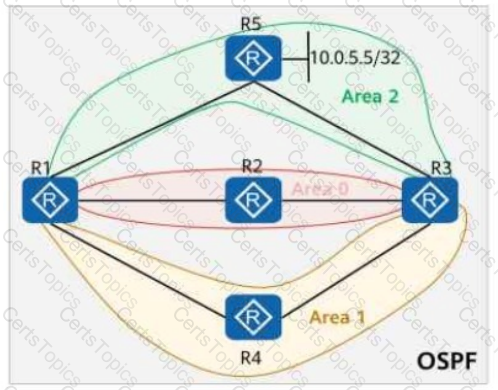Comprehensive and Detailed In-Depth Explanation:
1. Understanding Site of Origin (SoO) in MPLS VPNs
SoO (Site of Origin) is used in MPLS VPNs to prevent loops in multi-homed CE scenarios.
Routes with the same SoO value are not advertised back to the same site.
2. Analysis of Each Answer Choice
A. "To enable CE3 to receive the route, run the command peer 10.1.1.1 soo 200:1 on PE1." (❌ False)
SoO is used to prevent loops by tagging routes that belong to the same site.
Applying SoO (200:1) on PE1 for CE1 means that any other PE (such as PE2) receiving the route will not advertise it back to the same site (CE1).
This statement is false because applying SoO here does not directly enable CE3 to receive the route. Instead, CE3 must accept routes with SoO values properly configured.
B. "If the commands peer 10.1.1.1 soo 200:1 and peer 10.1.2.1 soo 200:1 are run on PE1, CE2 accepts the route." (❌ False)
SoO ensures that a route received from one CE is not sent back to another CE in the same site.
If SoO (200:1) is assigned to CE1 and CE2, routes will be blocked because they share the same SoO tag.
Thus, CE2 will not accept the route, making this statement false.
C. "If the command peer 10.1.3.1 substitute-as is run on PE2, CE3 accepts the route." (✅ True)
substitute-as allows a router to replace the received AS number in the AS_PATH with another AS number, ensuring that routes are accepted even when AS_PATH filtering is in place.
This prevents CE3 from rejecting the route due to AS-Path loop prevention.
✅ Thus, this statement is true.
D. "If no additional action is taken, CE3 discards the route." (✅ True)
By default, CE3 will discard the route because of BGP loop prevention (same AS in the AS_PATH).
To allow CE3 to receive the route, the allowas-in or substitute-as command must be configured on PE2.
✅ Thus, this statement is true.
3. Evaluating the Answer Choices
Option
Correct?
Reasoning
A
❌ False
Applying SoO does not directly enable CE3 to receive the route.
B
❌ False
If both CE1 and CE2 have the same SoO value, CE2 will reject the route.
C
✅ True
Substitute-AS allows CE3 to accept the route by modifying the AS-Path.
D
✅ True
Without additional configuration, CE3 will discard the route due to AS-Path loop prevention.
✅ Correct Answer: A and B are false.
Final Conclusion:
SoO prevents routing loops in MPLS VPN multi-homing.
CE2 will reject the route if it has the same SoO as CE1.
CE3 requires the substitute-as or allowas-in command to accept the route.
Thus, statements A and B are false.
[Reference:, HCIP-Datacom-Advanced Routing & Switching Technology V1.0 – BGP SoO and AS-Path Loop Prevention, Huawei Official HCIP-Datacom Study Guide – MPLS VPN Route Control, Huawei Documentation on BGP SoO and AS_PATH Filtering, , , ]


